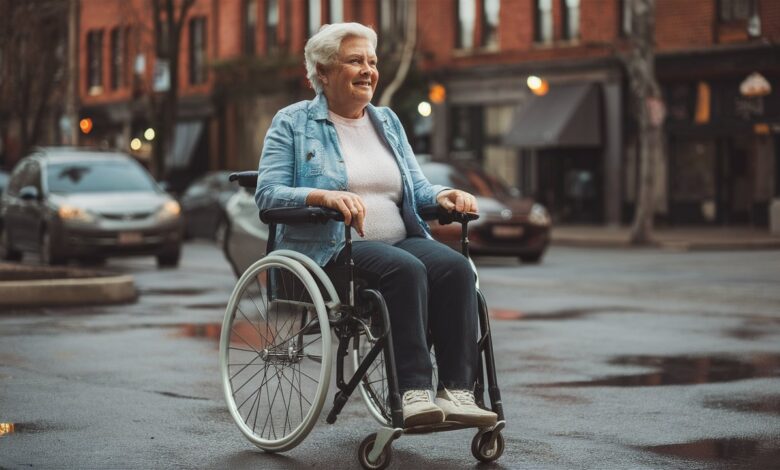Daily Life Made Easier: Tips for Living with Limited Mobility

Living with limited mobility can present daily challenges that affect independence, comfort, and quality of life. Whether due to injury, age, or chronic health conditions, limited mobility requires adjustments in how we perform routine tasks. With the right strategies, tools, and mindset, life can be made significantly easier, safer, and more enjoyable. Here are practical tips to help navigate daily life with limited mobility.
1. Optimize Your Home Environment
Your home should prioritize safety, accessibility, and functionality. Begin by decluttering and ensuring clear pathways to minimize the risk of trips and falls. Rearranging furniture can make it easier to move around and access frequently used spaces. Simple modifications, such as installing grab bars in bathrooms, ramps for steps, and non-slip mats in key areas, can significantly enhance safety.
Additionally, using adjustable furniture like chairs with sturdy armrests and beds with customizable heights can make daily tasks easier. For multi-level homes in Boise, ID, installing a home elevator can provide seamless access between floors, greatly improving mobility and independence.
2. Use Assistive Devices
Assistive devices can significantly enhance independence and reduce strain. Mobility aids like walkers, canes, and wheelchairs provide stability and support, while reaching tools or grabbers help access items on high or low shelves. Everyday items such as jar openers, adapted kitchen utensils, and long-handled shoehorns can make routine tasks less frustrating. Investing in the right tools tailored to your specific needs can save energy, prevent injury, and improve overall efficiency in daily life.
3. Simplify Daily Tasks
Breaking tasks into manageable steps can prevent fatigue and frustration. For example, rather than carrying multiple items at once, make multiple trips or use a rolling cart. Meal preparation can be simplified by planning easy-to-cook recipes, using pre-chopped ingredients, or incorporating adaptive kitchen tools. Laundry can be made easier with hampers on wheels, front-loading machines, and folding stations at accessible heights. By streamlining routines, you conserve energy and reduce the risk of strain or injury.
4. Prioritize Accessibility in Personal Care
Daily personal care routines, such as bathing, dressing, and grooming, can be challenging with limited mobility. Consider installing shower chairs, handheld showerheads, and bath benches to make bathing safer and more comfortable. Clothing with easy-to-use fasteners, slip-on shoes, and adaptive dressing aids can simplify getting dressed. Small adjustments like using electric toothbrushes, long-handled sponges, or hairbrushes with ergonomic grips can make self-care more manageable while maintaining independence and dignity.
5. Stay Active and Maintain Strength
Even with limited mobility, maintaining physical activity is crucial for overall health and independence. Gentle stretching, chair exercises, or water-based activities like swimming or aquatic therapy can improve flexibility, strength, and circulation. Consult with a physical therapist or healthcare professional to design a safe exercise routine tailored to your abilities. Regular movement not only supports physical health but also enhances mood and reduces feelings of isolation.
6. Embrace Technology
Technology can be a game-changer for those with limited mobility. Voice-activated assistants, smart home devices, and automatic lighting can make daily tasks easier and reduce the need for unnecessary movement. Online grocery shopping, home delivery services, and telehealth options can save time and energy while maintaining independence. Adaptive software and apps can also help manage schedules, medication reminders, and communication with caregivers or loved ones.
7. Seek Support and Community
Living with limited mobility doesn’t mean doing everything alone. Accepting help from family, friends, or professional caregivers can reduce stress and make daily tasks more manageable. Joining support groups, either locally or online, can provide valuable tips, encouragement, and a sense of community. Sharing experiences with others who face similar challenges can foster empowerment and motivation to adapt and thrive.
8. Focus on Mental Well-being
Limited mobility can sometimes lead to feelings of frustration, isolation, or anxiety. Prioritizing mental well-being is just as important as physical accessibility. Engaging in hobbies, staying socially connected, and practicing mindfulness or relaxation techniques can boost emotional health. Counseling or therapy may also be helpful for coping with lifestyle changes and maintaining a positive outlook.
In Conclusion
Living with limited mobility doesn’t have to mean sacrificing independence or quality of life. By optimizing your environment, using assistive tools, simplifying routines, staying active, embracing technology, and seeking support, daily life can become more manageable and enjoyable. Resources and personal stories — such as those shared by carey salley — remind us that small, thoughtful adjustments can make a big difference, allowing you to focus on living fully rather than struggling with limitations. With the right strategies, living with limited mobility can be less of a challenge and more of an opportunity to find creative solutions that enhance everyday life.




